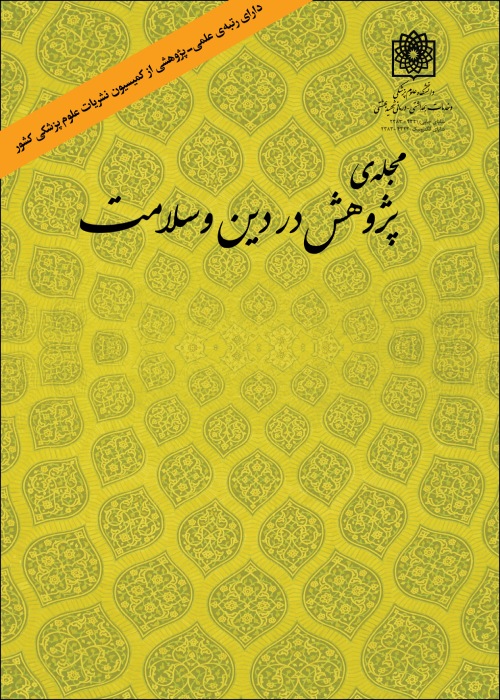Religious Attitude in First and Last Year Medical Students of Ahvaz Jundishapur University of Medical Sciences and its Relationship with Self-esteem
Religious attitude and self-esteem are the concepts that have tremendous effects on all aspects of human life and have been studied in various studies. The aim of this study was to examine the religious attitude and self-esteem of medical students in Ahwaz Jundishapur University of Medical Sciences and determine the relationship between these two variables.
In this descriptive-analytical study, 197 first- and last-year medical students were selected and evaluated. Data collection instruments were 25-item religious attitude questionnaire (Golris-Barahani), and 10-item Rosenberg Self-Esteem questionnaire. The results were analyzed using descriptive statistics, Spearman correlation coefficient, independent sample t-test, and Mann-Whitney test. All ethical issues were observed in this study and the researchers declared no conflicts of interest.
The mean age of the freshmen and senior’s were18.93±.94 and 24.59±1.28, respectively. The mean of religious attitudes and self-esteem score of students, on a scale of 100 and 40, were 60.42±10.01 and 26.51±5.92, respectively. The mean and standard deviation of the religious attitude scores of the first and last year students were 63.39±10.01 and 57.55±10.3, respectively, which was statistically significant (p<0.001). The mean and standard deviation of self-esteem scores in the first and last years of medical education were 26.58±6.14 and 26.43±5.71, respectively. This difference was not statistically significant (p=0.85). Pearson correlation coefficient showed a positive relationship between religious attitudes and self-esteem (r=0.156, p=0.032) and a negative relationship between intrinsic religious attitudes and age of students (r=0.293, p=0.001).
The results showed that the religious attitude of medical students is high at the time of entering university, but this attitude has weakened upon graduation. Identifying the factors lowering students’ religious attitudes to implement strategic plans can provide a basis for strengthening students' religious beliefs.
- حق عضویت دریافتی صرف حمایت از نشریات عضو و نگهداری، تکمیل و توسعه مگیران میشود.
- پرداخت حق اشتراک و دانلود مقالات اجازه بازنشر آن در سایر رسانههای چاپی و دیجیتال را به کاربر نمیدهد.


